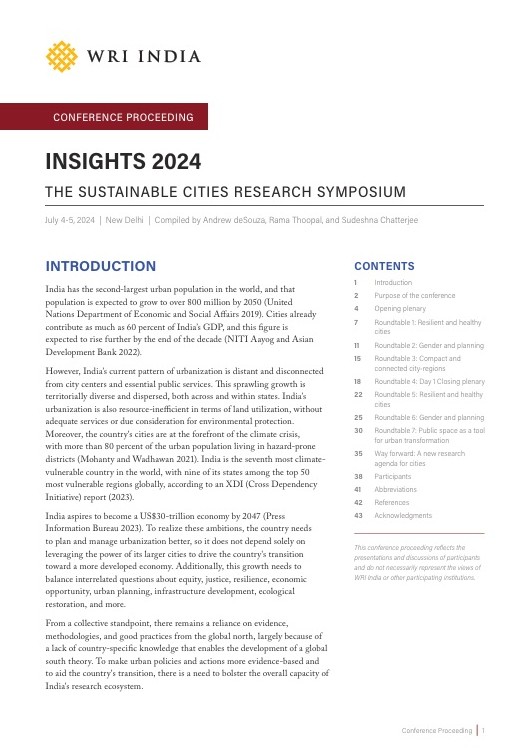Delhi’s Deadly Smog
by -
Around the start of winter is when the conversation on air pollution in Delhi usually begins. This coincides with two key events – Diwali and crop-burning. The conversation ends around the new year, coinciding with the change in weather. However, pollution is not gone for the rest of the year, as we often think. For example, in 2018, Delhi did not have a single good air quality day. Yes, zero good air quality days out of 365 days!
Therefore, it is not surprising that as per the World Health Organisation’s (WHO) 2018 dataset on global air quality, 14 out of the world’s 15 most polluted cities are in India. The Health Effects Institute report, The State of Global Air, reported that 25 percent of the total deaths due to air pollution in the world happen in India. The Lancet Commission on Pollution and Health estimated that 2.5 million Indians lose their lives prematurely due to air pollution every year. Therefore, air pollution is a serious problem in India and, owing to several factors, is more acutely felt in northern India.
There are multiplies sources for air pollution. However, vehicular exhaust is once of the mains reasons in cties, expecially around pariculate matter less than 2.5 microns. As per UEinfo, motor vehicles exhaust is the largest contributor to air pollution and is responsible for 30% of PM 2.5 concentration in greater Delhi’s ‘airshed’.
So, while we may only speak of air pollution at certain times of the year, the fact of the matter is that all there is conclusive evidence that air pollution is a much bigger problem than we anticipated. Here are three practical examples of how air pollution affects our daily lives:
Air Pollution is Linked to Diabetes
India is the diabetes capital of world with over 50 million people suffering from this chronic disease. Changing lifestyles and diets have often been blamed for this disease, but air pollution could also be a reason. Research by the Chinese Academy of Medical Sciences' Fuwai Hospital and Emory University, USA, showed that for every 10 cubic meters of long-term exposure of PM2.5, the risk of diabetes increased by almost 16 percent. PM2.5 are particulate matter that are less than 2.5 microns and includes toxins like sulfate black carbons and sulfates. These particles can penetrate deep into the lungs and have also been associated with lung cancer, chronic bronchitis, and heart disease, but this new study also links it to diabetes. It is estimated that by 2030, nearly 9 percent of the India’s population is likely to suffer from diabetes. This is too great a number to ignore.
Air Pollution Impacts Employee Productivity
Recent data collected by Nagarro, an IT firm in Gurugram, and MakeMyTrip, a travel portal, revealed that about half the respondents in the survey of these two companies confirmed that someone in their families had suffered from air quality related diseases within the last year. Around three-fourth of the employees expressed a desire to move out of Delhi due to winter smog, and an equal number of employees said they’d rather forgo their annual increments in lieu of better air. What was even more surprising was that on an average, families spends around INR 15,000 each year on medical bills for illnesses related to poor air quality. As per NASSCOM, there are 350,000 IT BPO jobs in Delhi NCR and assuming the same rates are applicable, this means that INR 2.6 billion is spent every year, on to air pollution related illnesses. This is only from the IT BPO companies, if one adds other employees the number will be even higher, adding to the stress on people’s incomes.
Air Pollution Puts the Growth and Development of Children at Risk
The World Health Organization’s report on air pollution and children’s health highlights the damaging impact of air pollution on the health and survival of children. The report estimates that 1.8 billion or 93 percent of the world’s children breathe toxic air. A third of these are children are under the age of five. The result is that around 700,000 children under the age of five die every year due to air pollution. The problem is much more acute in India. The WHO report indicates that 14 of the 15 most polluted cities in the world are in India; WHO’s study estimates that 1 in 10 children under the age of 5 die due to air pollution. The number is in excess of 100,000 a year. In addition, air pollution is also responsible for childhood cancers, asthma, pneumonia, and other types of acute lower respiratory diseases.
It is important for governments to address the issues of air pollution in a holistic manner. Air flow does not follow administrative or political boundaries. Therefore, to effectively address air pollution in a region, action must be taken in the ‘air shed’ area of Delhi. This means that state governments of Delhi, Haryana, Punjab, Uttar Pradesh, and Rajasthan must come together to solve this crisis. One state alone cannot achieve substantive change.


